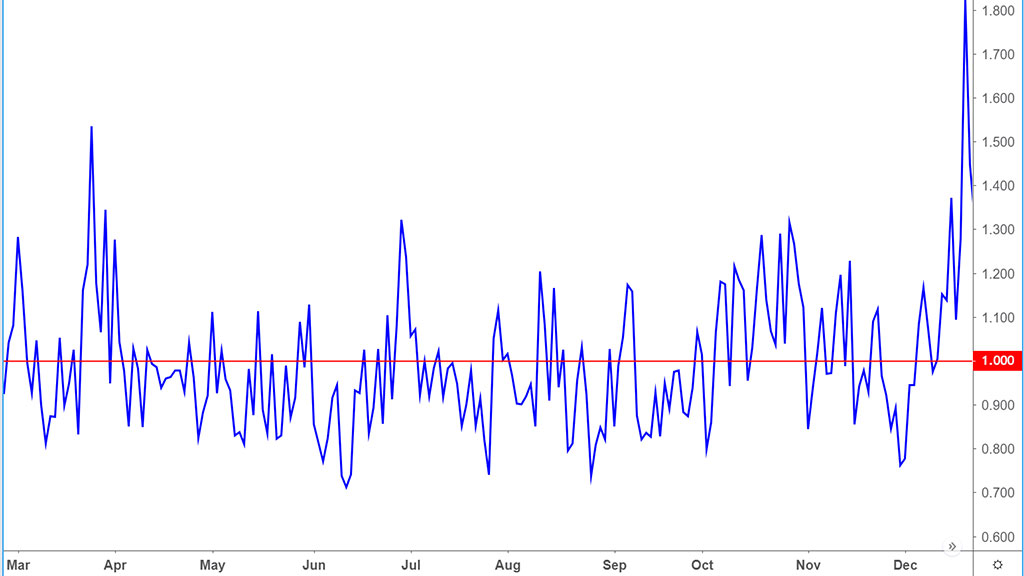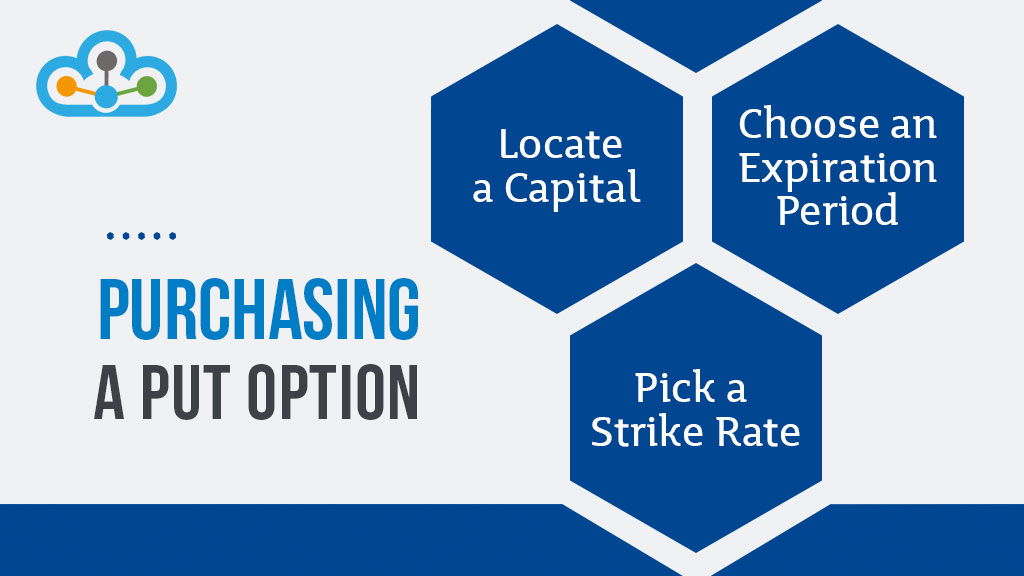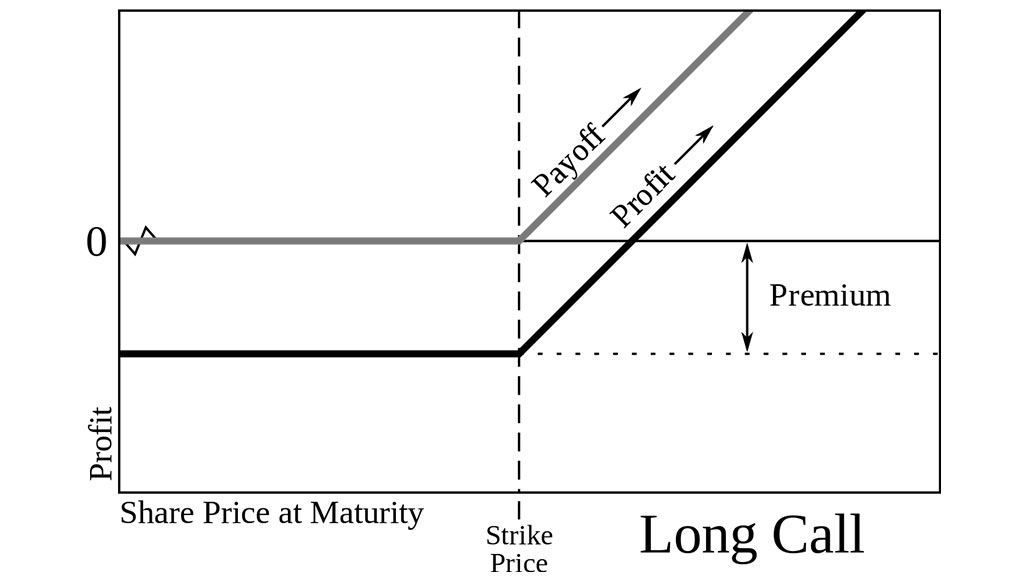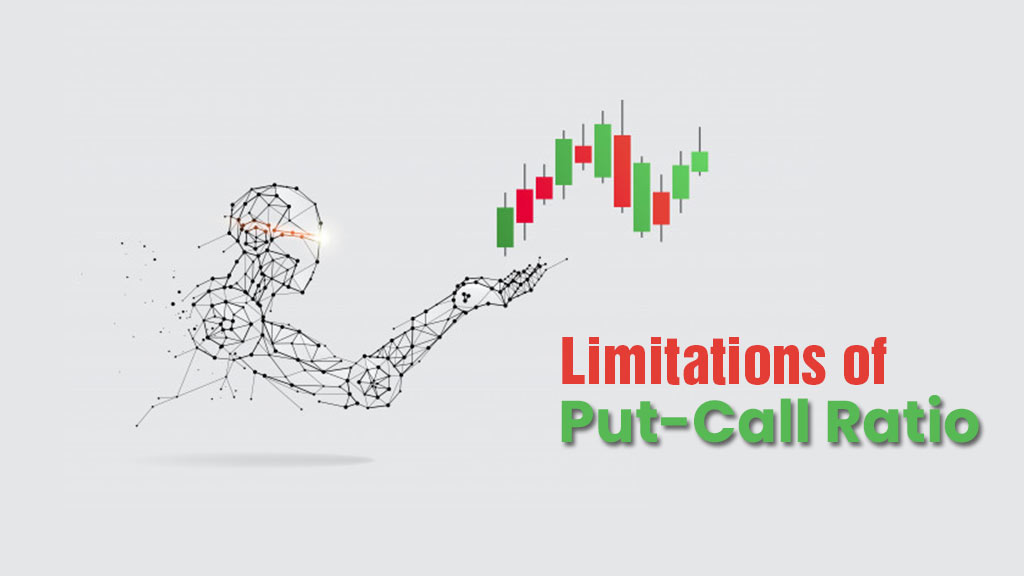 Investing in the market can prove quite exciting for a fresher. However, if you are new to the market, you should be open to learning new strategies. Put-call ratios can be a viable financing plan to gain more funds for both freshers and expert investors. Market indicators can provide a clue to understanding how the funds, markets, or security plans are trending out. The put-call ratio is one of the most beneficial devices to interpret the market viewpoint.
Investing in the market can prove quite exciting for a fresher. However, if you are new to the market, you should be open to learning new strategies. Put-call ratios can be a viable financing plan to gain more funds for both freshers and expert investors. Market indicators can provide a clue to understanding how the funds, markets, or security plans are trending out. The put-call ratio is one of the most beneficial devices to interpret the market viewpoint.
 The put-call ratio (PCR) is an indicator generally that defines the options market's state. The theoretical definition for the same is the number of put options traded divided by the number of call options traded in a given period. It helps the traders understand whether a current drop or increase in the market is extreme and if there is a need to do the contrarian call. When the ratio drops to a moderately lower amount, it is considered extremely bullish. Professional tradespeople apply the PCR as an indicator of production and also as a barometer of the complete market viewpoint. PCRs on more comprehensive indexes like the S&P 500 are also utilized as more common market climate measures. A put, also termed a "put option," is a capital owner's license to trade their security tokens at a particular decided amount. Stock players who maintain a put anticipate that the deposit's price will decline in value. This is because they earn money if the value drops lesser than the target value prior to the termination date. The call, also termed a "call option," is the reverse. It's the power for a purchaser to buy assets at a decided value. Stock players who maintain a call option are anticipating that the security price will rise in value. The standard utility for the PCR is not 1.00. This is so because investment securities tradespeople and investors essentially purchase a more increased number of calls than puts. Therefore, the typical ratio is frequently far more concise than 1.00 (generally around 0.70) for capital choices. If the ratio reaches closer to 1.00 or more than that, it is an indication of bearish sentiment. The more eminent from the standard number, the more it indicates puts being purchased comparable to calls. This step suggests that more stock players are gambling in opposition to the underlying. Consequently, the overall probability is bearish. Contrarily, if the proportion is close to 0.50 or lower, it indicates a bullish viewpoint.
The put-call ratio (PCR) is an indicator generally that defines the options market's state. The theoretical definition for the same is the number of put options traded divided by the number of call options traded in a given period. It helps the traders understand whether a current drop or increase in the market is extreme and if there is a need to do the contrarian call. When the ratio drops to a moderately lower amount, it is considered extremely bullish. Professional tradespeople apply the PCR as an indicator of production and also as a barometer of the complete market viewpoint. PCRs on more comprehensive indexes like the S&P 500 are also utilized as more common market climate measures. A put, also termed a "put option," is a capital owner's license to trade their security tokens at a particular decided amount. Stock players who maintain a put anticipate that the deposit's price will decline in value. This is because they earn money if the value drops lesser than the target value prior to the termination date. The call, also termed a "call option," is the reverse. It's the power for a purchaser to buy assets at a decided value. Stock players who maintain a call option are anticipating that the security price will rise in value. The standard utility for the PCR is not 1.00. This is so because investment securities tradespeople and investors essentially purchase a more increased number of calls than puts. Therefore, the typical ratio is frequently far more concise than 1.00 (generally around 0.70) for capital choices. If the ratio reaches closer to 1.00 or more than that, it is an indication of bearish sentiment. The more eminent from the standard number, the more it indicates puts being purchased comparable to calls. This step suggests that more stock players are gambling in opposition to the underlying. Consequently, the overall probability is bearish. Contrarily, if the proportion is close to 0.50 or lower, it indicates a bullish viewpoint.
 Purchasing a put option is not difficult, and it can frequently be more affordable, giving more support than other trading options. If you wish to obtain a put option, then follow the below-mentioned steps:
Purchasing a put option is not difficult, and it can frequently be more affordable, giving more support than other trading options. If you wish to obtain a put option, then follow the below-mentioned steps:
The purpose is to put your money in a security whose value can go lower over a particular period. You can classify this asset by taking suggestions from a qualified stockbroker or investor, studying the security's direction, or learning about the put/call ratio.
The amount of time you take to decide about a purchase is known as expiration date. Experts recommend taking extra time because the additional time before the expiration is directly proportional to the lower the stock value is expected to go.
All stocks should meet a specific amount before exercising the put option. For instance, purchasing a put option with a strike rate of $20, then selling the lot at $20; however, there is no obligation that you have to adhere to. Remember, the purpose of put choices is to purchase cheap and trade high.
 For purchasing the put option, follow these steps;
For purchasing the put option, follow these steps;
It should be a stock which has the potential to increase in price. The purpose is that the option to buy the stock should be available before the stock price hits too high.
The call option falls under your power, without implying any responsibility, to purchase share security (groups of 100) after the capital value reaches a decided price prior to a fixed expiration period.
After obtaining the call option, you may decide to sell it if the funds are not going, only incurring a loss on the premium rate you spent on the opportunity. Or, if there is an increase in the stock value, you may decide to use your call option and purchase the capital at the accepted discount. There is no need to wait till the expiration period. If you wish to implement the put-call ratio to your trading plan, it is essential to follow a few tips. Keep reading to know more about some of the most popular tips used by stock experts.
The PCR can be deceptive and exploited by stock traders and should only be applied to investments and remarkably liquid companies.
If a stock or market ETF is rallying to new highs, it may cause the Put-Call Ratio to spike and is actually not a bearish sign.
As each market or stock is different, there may be other "normals" that each one has. It's essential to understand the "norm" or average readings of every market you trade to understand how this ratio works every day.
PCR's are indicators, a bit like a MACD or Moving Average, which suggests that the markets can continue in their original direction and not reverse, no matter the PCR value. The PCR is usually best used with other sentiment data, fundamental analysis of the market, or technical studies of price action and chart trends. High put/call ratios in historical terms indicate excessive pessimism on the opposite hand; low put/call ratios indicate some extent to which their optimism and greed are in control of the market. Whichever strategy you choose, you'd wish to be mindful of individual factors when using the put/call ratio.The extremes identified by this ratio aren't a market timing indicator – they're to provide you a thought of how overbought or oversold the sell is in historical terms. In some cases, options positioning won't reflect the Cash Forex market acknowledged accurately as it's such a little market that reduces the predictive value of the put/call ratio. The thinking is that it's more important to understand what proportion of total money investor spends on puts versus calls than merely to ascertain the quantity. Now has some validity. For instance, an individual only hedging his position is not that bearish but wants to shop for some puts as insurance. He might buy fairly deep out-of-the-money puts. Thus, a private would spend his dollars on relatively low-priced puts. On the opposite hand, a genuinely bearish speculator would presumably buy a put with a better delta – something that's at-the-money, or perhaps slightly in-the-money. Thus, this "true" bearishness might end in a better expenditure in terms of dollars.
 A non-averaged Put/Call Ratio is often very volatile, providing many false signals or ill-timed signals. Using an averaged Put/Call Ratio can help filter a number of these signals; the disadvantage to averaging is that trade signals occur later within the move. The acute levels are never fixed either. Traders have to check out the Put/Call chart and detect which excessive levels caused reversals within the past. Further, traders need to trust that that level will produce an equivalent end in the longer term. Using the entire Put/Call Ratio is going to be most straightforward for several traders. Still, if using the Equity or Index Put/Call Ratio independently, traders got to remember inherent biases and adjust their extreme levels accordingly.
A non-averaged Put/Call Ratio is often very volatile, providing many false signals or ill-timed signals. Using an averaged Put/Call Ratio can help filter a number of these signals; the disadvantage to averaging is that trade signals occur later within the move. The acute levels are never fixed either. Traders have to check out the Put/Call chart and detect which excessive levels caused reversals within the past. Further, traders need to trust that that level will produce an equivalent end in the longer term. Using the entire Put/Call Ratio is going to be most straightforward for several traders. Still, if using the Equity or Index Put/Call Ratio independently, traders got to remember inherent biases and adjust their extreme levels accordingly.
A put-call ratio is an excellent tool for spotting contrary trading opportunities and works very well if combined with another two popular sentiment indicators – the CFTC Net Traders positions and Market Vanes % Bullish. If your priority is to make money in Forex, check out the put-call ratio and better understand the market movement. Another thing to believe while making use of the PCR is to incorporate up-to-date market activity. As the broad market takes a steep high during a short amount of a while, falling PCR might be a logo of an imminent pullback. Stock traders should also make sure to investigate the long-term inclinations of former PCRS on different indexes.

Thestock market never stands still, and prices swing constantly with every new h...

In the world of high-speed trading, success often hinges on capitalising on even...

The stock market in India has fascinated general Indian masses for long, perhap...